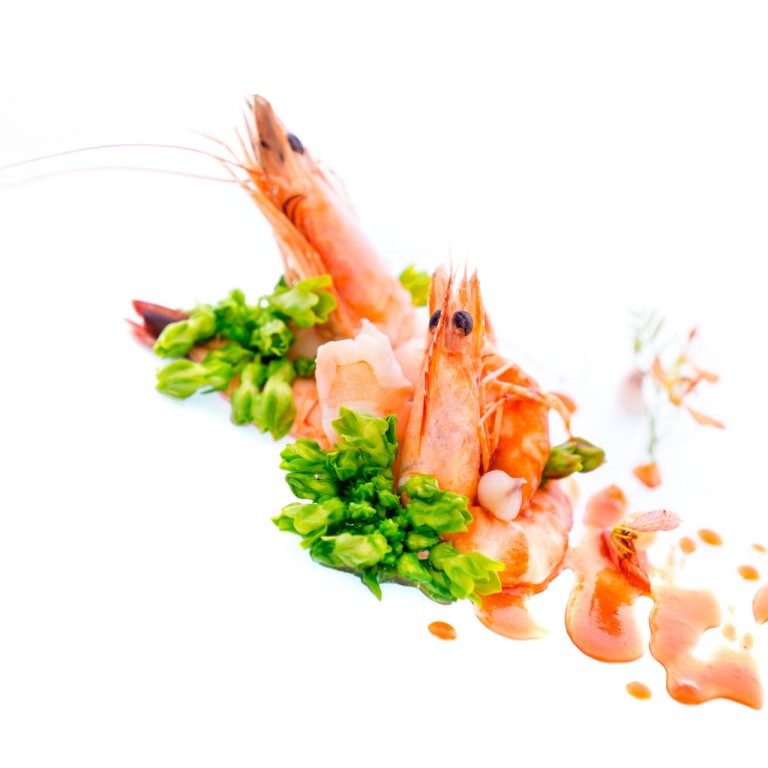
Spa cuisine adds flavour thanks to innovative Hong Kong and Thai chefs
Spa cuisine has come a long way. Meals remain healthy but don't skimp on flavour or creativity.
Bland, boring and unsatisfying: that was the reputation of spa cuisine when it first emerged in the 1970s. Stripped of fat and low in calories, it served the goal of weight loss and mirrored the nutritional consensus at the time that all fats were bad. With dishes such as steamed vegetables and egg white omelettes, it was seen as just a step up from hospital food.
Spa cuisine has come a long way since then. Meals remain healthy but don't skimp on flavour or creativity, with some chefs, such as Frenchman Michel Guérard, earning Michelin stars for their spa cuisine.
"People look at healthy food differently now," says Paisarn Cheewinsiriwat, executive chef at Chiva-Som, an internationally renowned wellness resort in Thailand that recently celebrated its 20th anniversary.
"Low-fat is best? Maybe not true: now there are bad fats and good fats. Low-salt? Now people use high-quality salt but in limited amounts, because the body needs the mineral."
At The Peninsula Hong Kong, for example, the spa menu includes dishes such as slow-poached bay scallops with citrus salad and pan-fried pork medallion on quinoa with mustard jus. At the InterContinental Hong Kong, the menu incorporates antioxidant-rich ingredients with dishes such as light curry cauliflower soup with chia seeds and chestnut soybean blancmange with mango sorbet.
In his 12 years at Chiva-Som so far, Paisarn says the resort's spa cuisine has changed dramatically. "The purpose has changed from simply serving food in a spa to food that fits a healthy lifestyle but tastes great, too," says the 38-year-old.
On his menu you'll find Thai favourites such as green curry with chicken, pad thai and crispy prawns - prepared, of course, in a healthier way.
Green curry with chicken, for example, begins with green curry paste heated in reduced vegetable stock instead of stir-frying in oil. Coconut milk is replaced with low-fat milk. And rather than a few pieces of meat swimming in a pool of sauce, Chiva-Som's version is chicken breast with a light covering of sauce.
Crispy prawns aren't battered and deep-fried. Instead the prawn is dipped in egg white, coated in coconut flakes and baked. "It doesn't achieve the same crispiness as deep-fried tempura prawns, but you will enjoy it," says Paisarn.
Oil is never used for cooking, he says. For dressing salads, Paisarn has a "wellness oil blend" that's a combination of cold-pressed sesame, rice bran and coconut oils.
Produce is always organic and ingredients are locally sourced as far as possible. Chiva-Som has its own farm less than an hour away from the resort that grows local vegetables and herbs, and some fruit.
"In the past, guests looking at a menu would be attracted to dishes such as Canadian lobster. Now people care for local products: we use Hua Hin lobster and guests appreciate this more. The lobster is fresher and much more flavourful because it doesn't have to be flown in," he says.
Even indulgence has its place in spa cuisine. Paisarn, for example, has created a Nutella-like spread that he calls Chivatella: a mix of coconut oil, nuts and cocoa powder.
"The biggest compliment is when guests say, 'Thank you very much for the good food; our blood pressure and sugar levels have gone down, and we've lost weight - all without trying'," Paisarn says. "It's the biggest compliment because they realise they haven't gone to a boot camp or hospital where they had to limit their pleasure of eating, and yet they leave healthier."
If you can't afford to visit these luxurious spas and try their food, you can incorporate the tricks of spa cuisine cooking at home. In his latest cookbook , Paisarn shares his recipes, techniques and ingredients. Most of the dishes are Thai with a European twist. Here are some quick tips:
Vegetable stock is one of the foundations of Chiva-Som's spa cuisine. It's best used fresh, but can be refrigerated for two or three days, or even frozen.
You'll need: two tomatoes, half a small Chinese cabbage, four sticks of Chinese celery, four coriander roots, four spring onions, one medium carrot, one medium onion, one white radish, and 1.5 litres of purified water. Place everything in a pot over medium heat and bring to boil. Reduce heat and simmer for one hour, then strain.
To make the spread: steam five bulbs of garlic for 50 minutes. When cool, use a knife to cut the tops off the bulbs, then squeeze out the flesh. Place the flesh in a blender and blend to a paste.
Instead of using fat such as coconut milk for flavour, take advantage of the acidity of citrus juice such as lime and orange to brighten a dish. Try mixing soy sauce, lime juice and honey for a tasty dressing.
It's fantastic as a sweetener for soups, stir-fries and curries.

